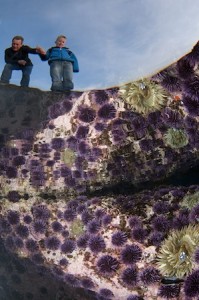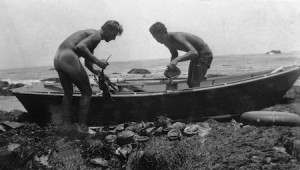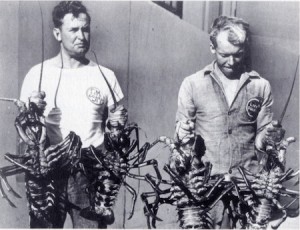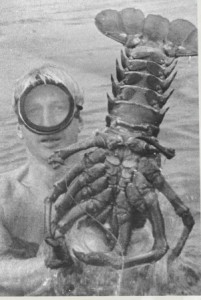
The diverse beauty once in Laguna Beach’s tidepools will never be the same, according to a scientist studying the effects of urban impact on the town’s marine protected areas.
The imposition of a five-year, no-fishing ban across most of Laguna’s coastline, which took effect last January, won’t reverse the decimation in tidepools without increased monitoring efforts, said Jayson Smith, Ph.D., a marine ecologist and conservation biologist at California State Polytechnic University, Pomona.
“Despite the overwhelming evidence of negative impacts, management practices, in my opinion, fall a little short,” said Smith, describing the effects of human intrusion and urbanization on rocky shore tidepools at Dana Point’s Ocean Institute as part of the Southern California Aquarium Collaborative lecture series. He’s been studying the local intertidal zone, or tide pools for nearly 18 years.
Efforts to manage the tidal resources by state Fish and Wildlife Department wardens and nonprofit initiatives such as Laguna Ocean Foundation’s docents and educators miss the mark, he said; there’s too much focus on stopping people from collecting shells and tidepool animals and not enough on curtailing the handling and trampling of mussel beds and seaweed, he said.
“I think it’s pretty safe to say that the decline in intertidal species will continue to occur where essentially all of the targetspecies for collection will be gone,” he said. “That’s not to expect local extinction, but you’ll see a much less attractive intertidal zone.”
There’s been a drastic decline in sea stars, mussels and seaweed in the tidepools since the 1970s, Smith added, as well as the near-extinction of black abalone. “Abalone used to be an abundant and very important herbivore in the tidal zone,” he stated, “but it’s now virtually extinct,” and considered an endangered species.

The current state plan to replant the intertidal black abalones is pointless in Southern California, he continued, “because it’s just going to be collected.” Marine biologist Nancy Caruso, involved in kelp and abalone restoration efforts offshore in Laguna, agrees, adding that no one knows how to grow the black variety yet. Caruso plans to reintroduce the easier-to-grow green abalone, another dwindling species, but not in Laguna’s protected tidepools.
Sea stars, like black abalone, suffered from a bacterium, but declining numbers are also mostly due to people impulsively pulling them off rocks as souvenirs, which destroys and injures their tube feet, Smith explained.
The decline of the tidepools’ health has been hastened over the last 20 to 30 years due to the boom in the region’s population and housing density along the coastline, Smith stated. The result is too many people disrupting coastal ecosystems by collecting, trampling and handling tidepool animals, plants, shells and rocks, he said, predicting it would take up to 15 years without human intrusion for a modest comeback.
“When I started to make these observations early on,” he told a small audience at the Ocean Institute, which included local high school students, “I was really concerned whether MPA’s (marine protected areas) were actually effective in enhancing and protecting the intertidal population like they’re supposed to.”
People illegally move and collect rocks and shells that provide shelter for organisms as well as take sea stars, hermit crabs and mussels in posted no-take zones encompassing most of Laguna’s coastline, which carries a maximum $1000 fine, Smith said. But more egregious, he asserted, is how often people handle live plants and animals and trample seaweed and mussel beds.
“You might not care about seaweeds but they’re actually really important to the health of the habitat,” he stated. Heisler Park’s marine reserve saw 80,000 visitors a year at the last official count in 2009, according to a Newport Beach monitoring agency. At Treasure Island, the beach below the Montage resort, with at least 130,000 annual visitors according to the resort’s reports, the rockweed is nothing short of stubby twigs. “That’s important because all their reproductive parts are at the tips of their leaves,” Smith explained.

Mussels, although seemingly able to withstand the weight of the most substantial human intruder, are a fragile ecosystem unto themselves, providing habitat for up to 300 other organisms. “There’s something more important going on when trampling mussels than just crushing them,” the marine biologist explained.
Mussels attach to rocks and each other with fragile threads shot out of their foot that intertwine to hold the beds together. When people take mussel shells or indiscriminately walk on the beds, they’re breaking innumerable strings and threatening the life of the entire community.
When the mussel beds wash en masse into the sea, they can no longer feed by filtering phytoplankton from the water, which requires high wave action, and they end up dying on the bottom of the sea.
Reproduction is also a key factor in the decline of the tidepool habitat. People tend to collect the biggest and the best specimens. Unlike the human creature, with sea creatures, size and age make them more virile. “We’re really messing with their ability to reproduce themselves,” Smith said.

The solution isn’t keeping people out of the tidepools, Smith said, as done in parts of San Diego’s Cabrillo National Monument and Fitzgerald Marine Reserve in San Mateo County, which are easily monitored by nearby ranger stations.
“I don’t think human exclusion is, first of all, possible because the Coastal Commission says all the coastline is open to public,” he explained. “And I also don’t think it’s desirable because you want people to care about this habitat.” Newport Beach plans to offer a portable touch-tank to help alleviate human impact on Little Corona del Mar. “I am curious to see how well this will work,” said Smith, “but one obvious concern is the loss and needed replacement of live material.”




